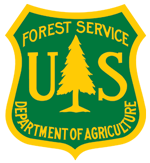-
 The Barn Group Land Trust
The Barn Group Land Trust
-
TBG preserves, protects, and maintains streams, wetlands, and natural resources to increase stewardship and conservation for present and future generations.
Located in
LP Members
/
Organizations Search
-
USDA, Interior and Defense departments partner to benefit agricultural lands, wildlife habitat and military readiness
-
Agriculture Secretary Tom Vilsack, Interior Secretary Sally Jewell and Defense Acting Deputy Under Secretary for Installations and Environment John Conger announced today a federal, local and private collaboration that will preserve agricultural lands, assist with military readiness and restore and protect wildlife habitat.
Located in
News & Events
-
 Washington, Dawn
Washington, Dawn
-
Located in
Expertise Search
-
Wetlands clean water, provide homes for wildlife across the nation
-
Wetlands play a crucial role in the world’s ecosystem by protecting and improving water quality, filtering surface water, storing floodwater and creating or enhancing wildlife habitat.
Located in
News & Events
-
 Wildlife Mississippi
Wildlife Mississippi
-
At Wildlife Mississippi, we measure success by the number of acres of habitat we protect, restore or enhance and by the number of miles of streams we improve. A healthy environment makes good economic sense for Mississippi and the nation.
Located in
LP Members
/
Organizations Search
-
 Worldwide evidence of a unimodal relationship between productivity and plant species richness
Worldwide evidence of a unimodal relationship between productivity and plant species richness
-
The search for predictions of species diversity across environmental gradients has challenged ecologists for decades. The humped-back model (HBM) suggests that plant diversity peaks at intermediate productivity; at low productivity few species can tolerate the environmental stresses, and at high productivity a few highly competitive species dominate. Over time the HBM has become increasingly controversial, and recent studies claim to have refuted it. Here, by using data from coordinated surveys conducted throughout grasslands worldwide and comprising a wide range of site productivities, we provide evidence in support of the HBM pattern at both global and regional extents. The relationships described here provide a foundation for further research into the local, landscape, and historical factors that maintain biodiversity.
Located in
Resources
/
Climate Science Documents
























